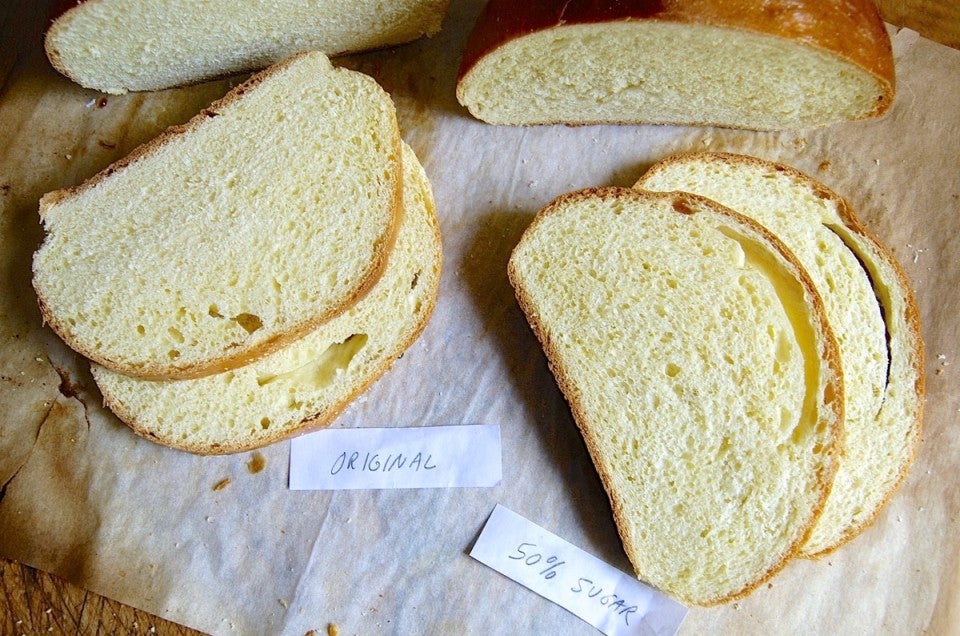


You’ve decided to cut back on the sugar in your diet. But you love to bake. It’s the baker’s conundrum! Thankfully, if you’re a bread baker, it’s easier to reduce sugar in yeast bread than in almost any other type of treat.
Cookies with a lower amount of sugar won’t spread properly. Reduced-sugar cakes may not rise as high. But sugar doesn’t affect the structure of yeast bread, except in a positive way: the lower the amount of sugar, the stronger a loaf’s rise.
And as for texture, reduced-sugar cakes or muffins may be tough and rubbery; and cookies tend to crumble. But when you reduce sugar in yeast bread, the only textural difference you might see is a tendency towards dryness.
Why is this? Sugar is hygroscopic; that means it attracts and holds moisture. Without sugar, moisture evaporates from bread during baking, creating a drier loaf. The more sugar you cut from a sweet yeast bread recipe, the more you’ll notice this effect. But omit the 2 tablespoons of sugar in your sandwich bread recipe, and the change in moisture level is subtle at most.
How about keeping qualities: does bread with sugar stay fresh longer? Yes, to a degree. A typical sandwich loaf with 1 to 2 tablespoons sugar starts out slightly softer than bread without sugar and remains that way as the days pass. But at this level of sweetening, the difference isn't dramatic.*
*The best way to keep sandwich bread fresh? Decide how much you'll use up within a couple of days, and store it at room temperature. Slice the remainder of the loaf, wrap individual packets of slices (I wrap five at a time), place in a bread bag, and freeze.
Bottom line: When you reduce sugar in yeast bread, the result is nearly all about flavor. The amount of sugar you use in yeast bread is strictly up to you and your taste buds.
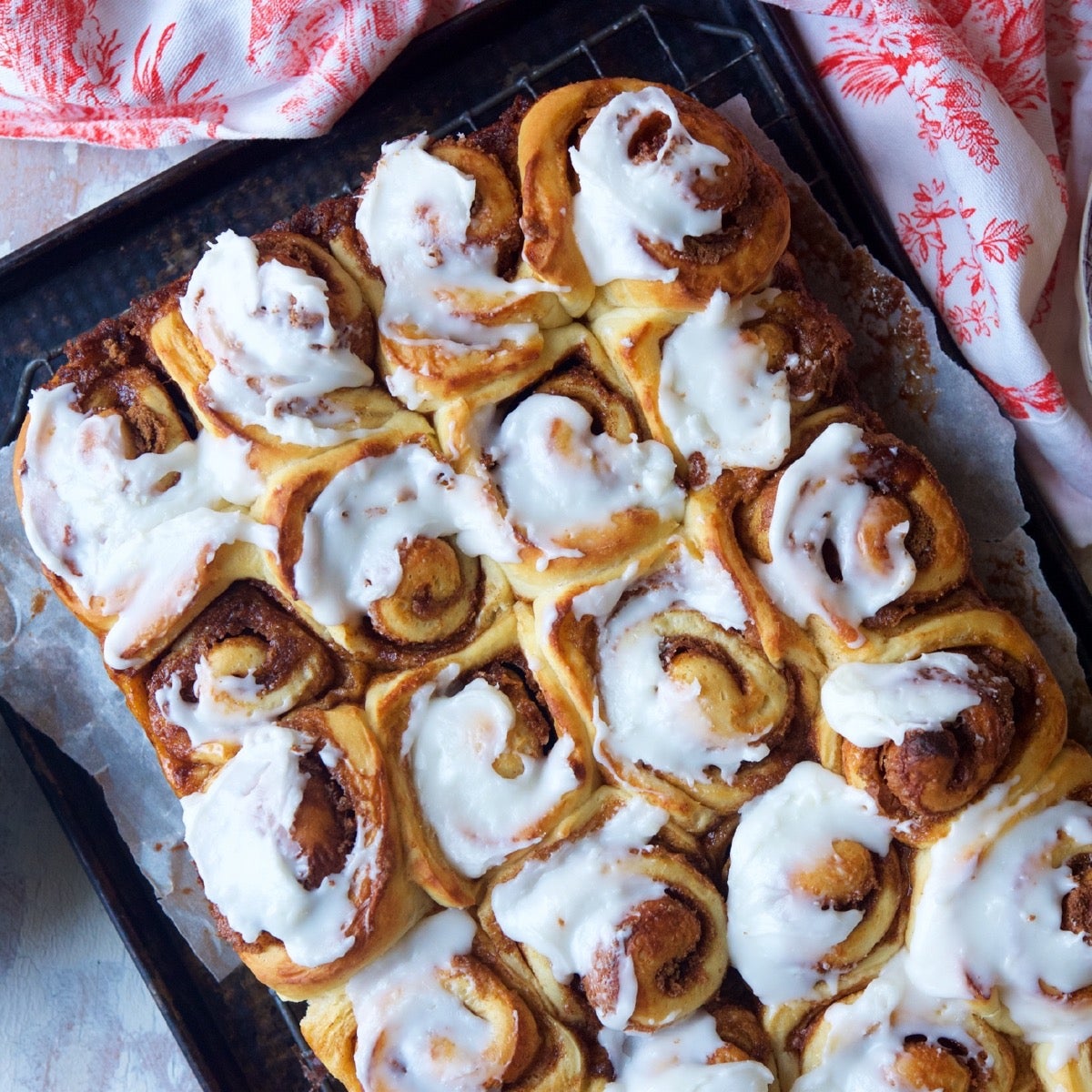
Now, consider the sugar in breads and rolls whose flavor hallmark is sweetness. Will you be happy removing 100% of the sugar from a frosted cinnamon roll recipe, for instance?
No, probably not (though you can certainly reduce the sugar to a degree). You need to use common sense when looking at your recipe. Is sugar a major part of the experience (as in that beloved cinnamon roll)? Or is it secondary? (Think whole wheat bread.) How can you tell ahead of time?
Sweetness is subjective; people perceive sugar levels in very different ways. That said, you can use baker’s percentage (the weight of any ingredient in a recipe compared to the weight of the recipe’s flour) to gauge ahead of time just how sweet your bread might taste — and therefore how much sugar you’re willing to cut.
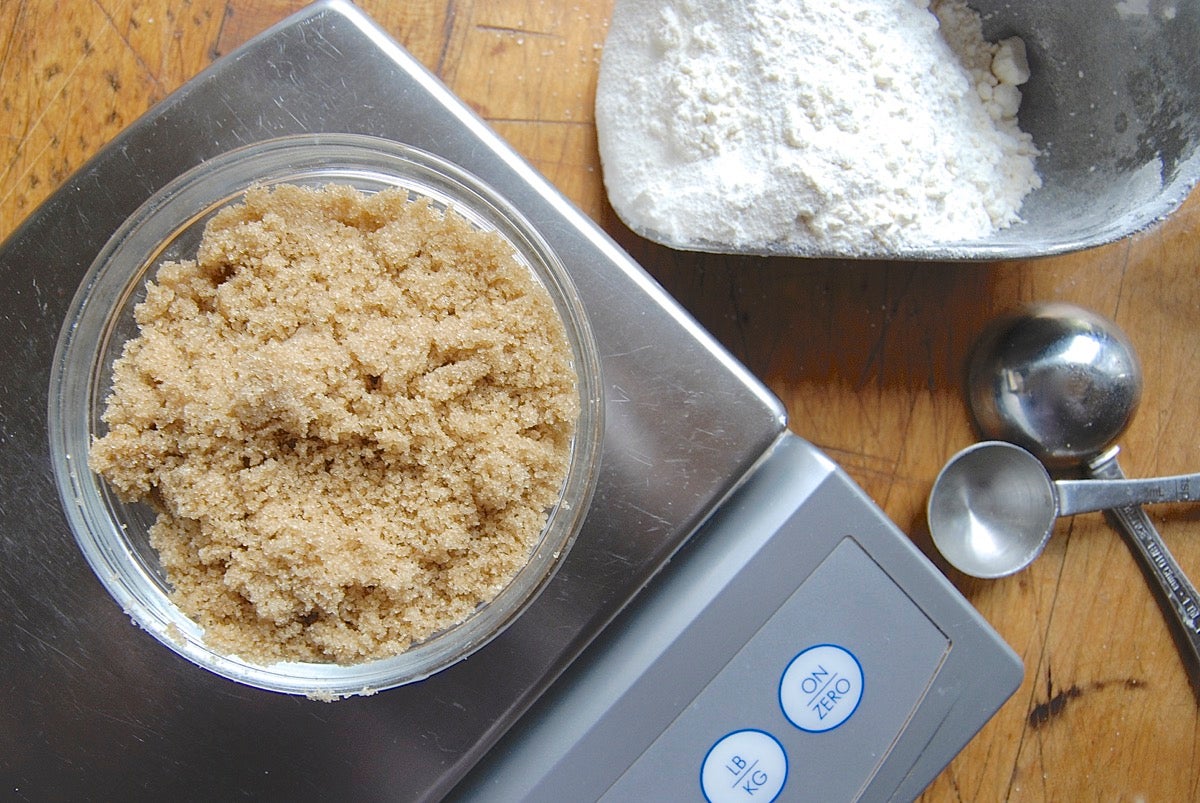
After some experimentation, I’ve decided a baker’s percentage of 10% sugar is the cutoff for sugar being a bit player instead of a star. Our Classic Sandwich Bread recipe, for example, calls for 2 tablespoons (25g) sugar and 3 cups (361g) flour. Let’s do the math: 25 ÷ 361 = 7%. When I sample this sandwich bread, my overall perception is simply “This tastes good;" not “This tastes sweet."
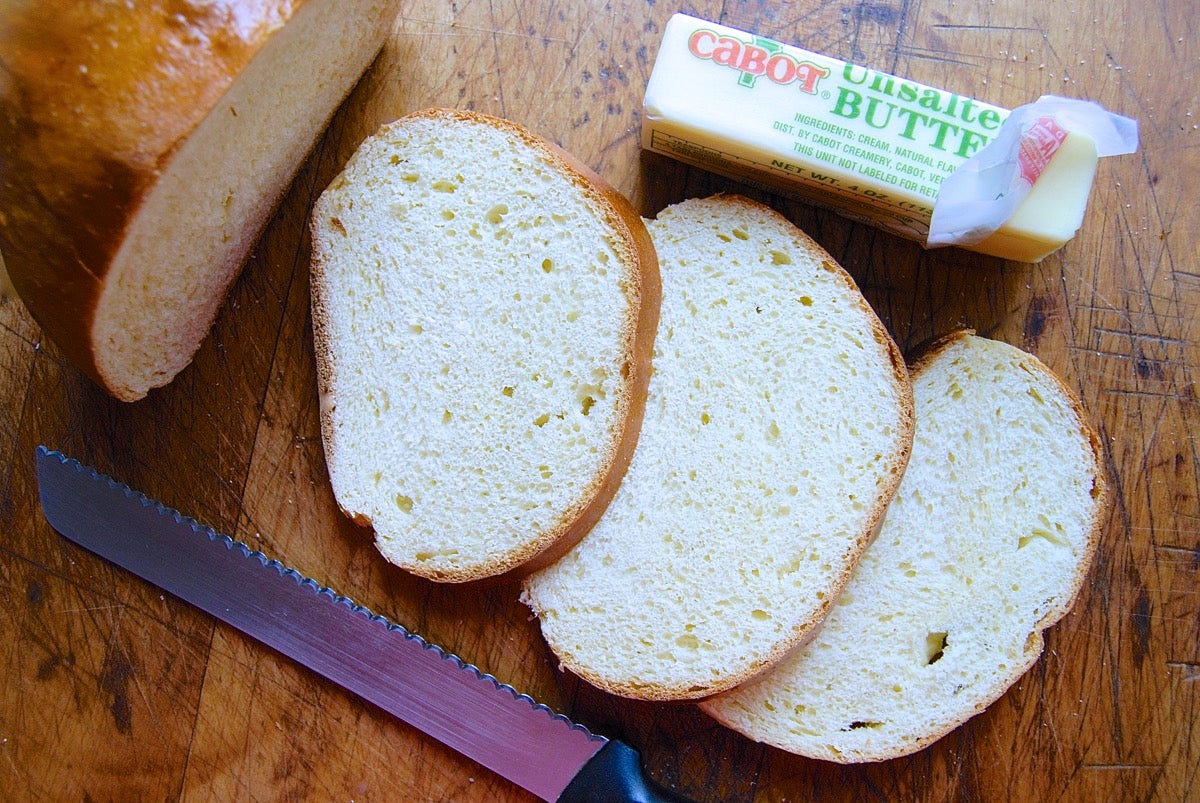
Jump over to Portuguese Sweet Bread, however, and the story changes. With 1/3 cup (67g) sugar and 3 1/4 cups (390g) flour, the baker’s percentage of sugar is 17%. And when I sample a slice, my first impression is “This is sweet bread.”
How do you know how much sugar you can take out of that sweet bread recipe, and still perceive it as sweet? Don’t go below 10% baker’s percentage.
Interested in finding out more about adjusting ingredient amounts in your favorite recipes? Read our post on baker's percentage.
OK, enough with the math and science. Want to hear the 10 things I learned while testing how to reduce sugar in yeast bread? Thought so!
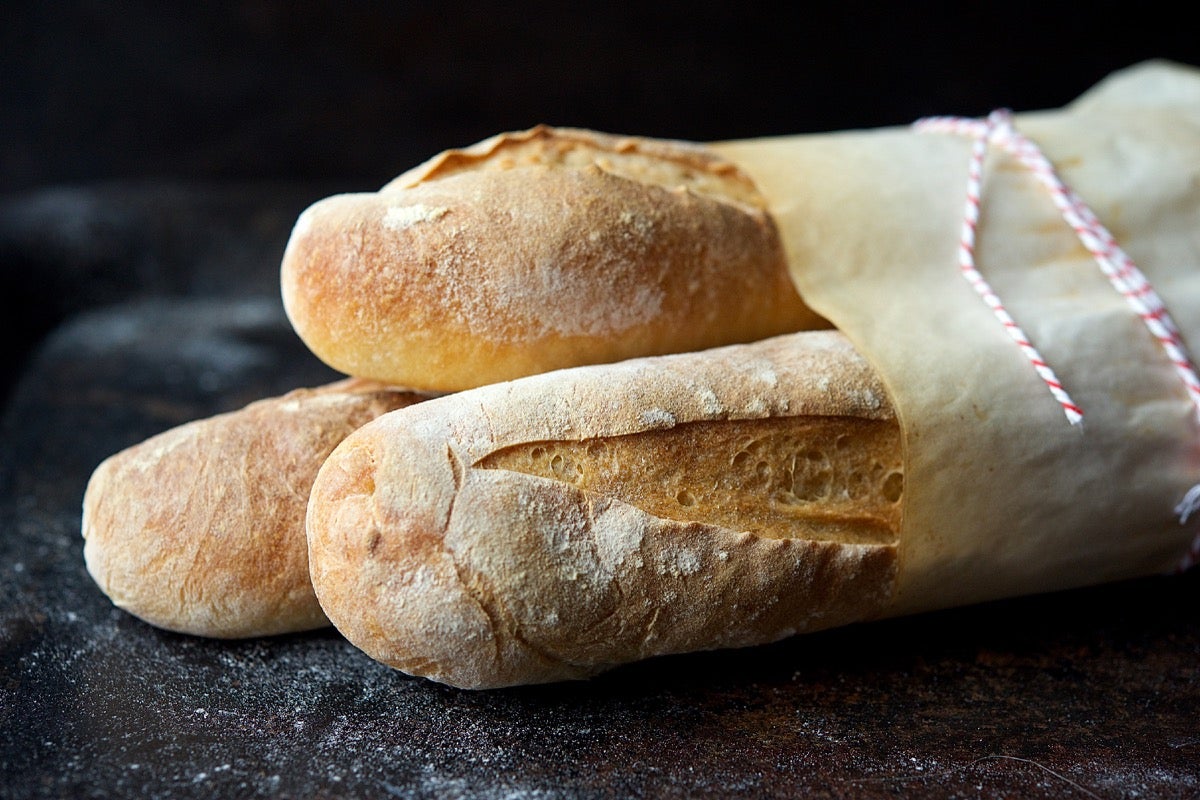
Some bread recipes use no sugar at all: think baguettes. If you’re determined to bake bread using no sugar at all, choose a sugar-free recipe: it’s as simple as that.
Let’s go back to that sandwich loaf, with 2 tablespoons of sugar. Once you slice it up, you’ll be getting about 1/3 teaspoon sugar in each serving. Worth cutting? Up to you.

Actually, it does; but it doesn’t need you to spoon-feed it from your sugar bowl. Yeast readily makes its own food supply by transforming flour’s starch into sugar. Yes, sugar jump-starts yeast right at the beginning, but yeast dough without sugar will soon catch up.
Most older recipes call for “proofing” active dry yeast by mixing it with sugar and water. Bubbles, foam, and expansion after 10 minutes or so mean the yeast is good. If you question whether the yeast in that old packet you found is alive, “prove” it by mixing it with 1/4 teaspoon sugar and 1/4 cup warm water.
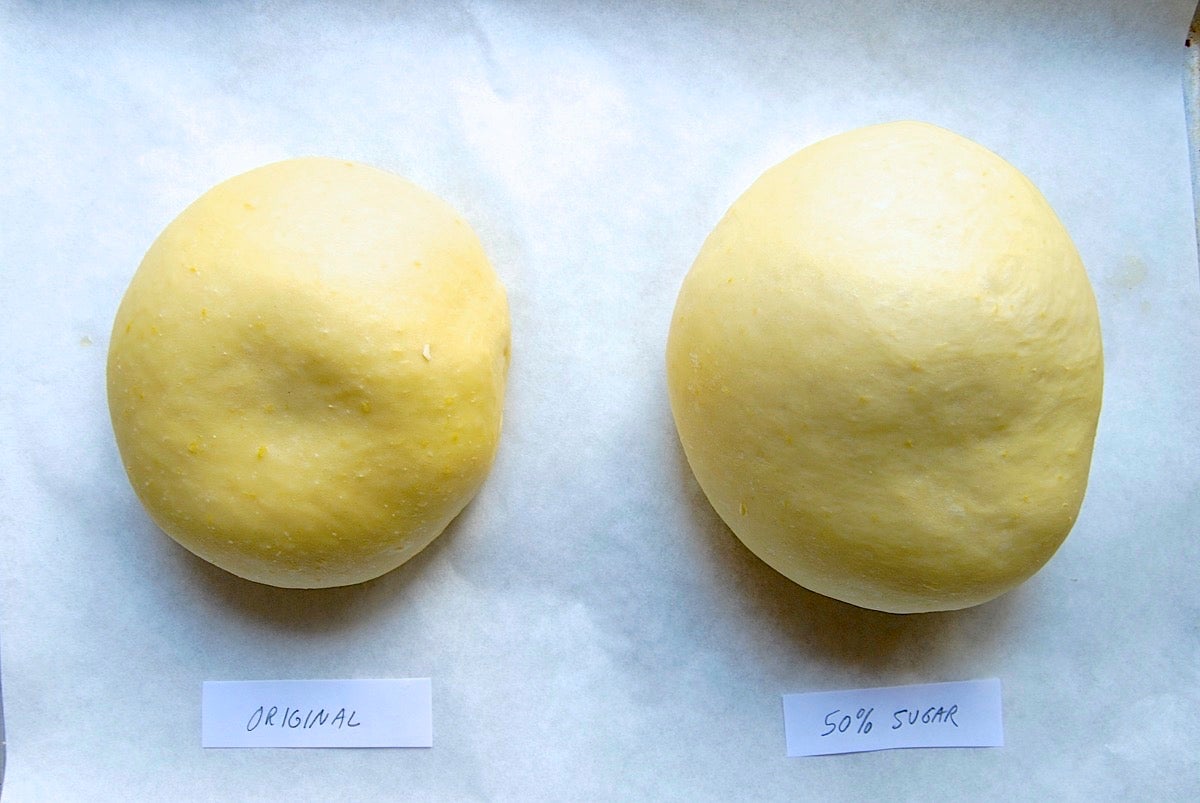
Remember, sugar is hygroscopic. And in yeast dough, this means it can deprive yeast of the moisture it needs to grow. Ever waited impatiently for your sweet bread to rise? Blame the “arid” atmosphere; and change your yeast (see #6, below).
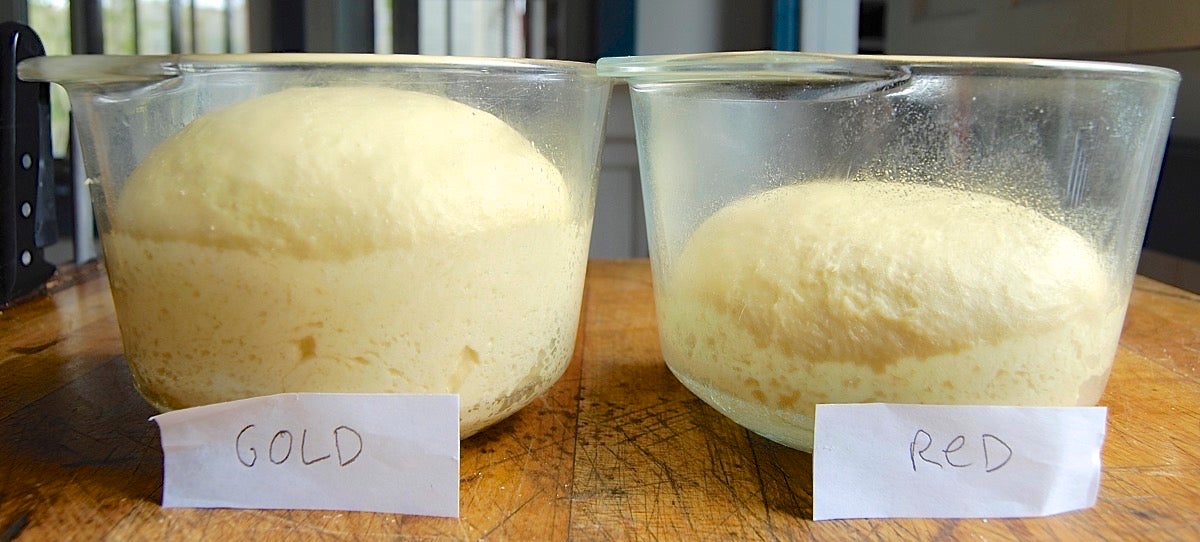
SAF Gold yeast is osmotolerant. Translation? It’s like a camel in the desert: it functions just fine with a limited amount of moisture. Use SAF Gold yeast in any recipe with more than 10% sugar (baker’s percentage), and you’ll see a faster rise.
A small amount of sugar (like salt) enhances bread’s flavor. I’ve found anything up to 10% sugar (baker’s percentage) adds a certain richness to bread’s flavor without adding noticeable sweetness.

Some of the sugar in yeast dough rises to the surface and caramelizes as bread bakes, yielding rich brown color. This may or may not be a good thing, though. The small amount of sugar in a sandwich loaf yields a nicely browned loaf. But the larger amount of sugar in panettone means you’ll need to tent it with foil as it bakes, to protect it from over-browning.
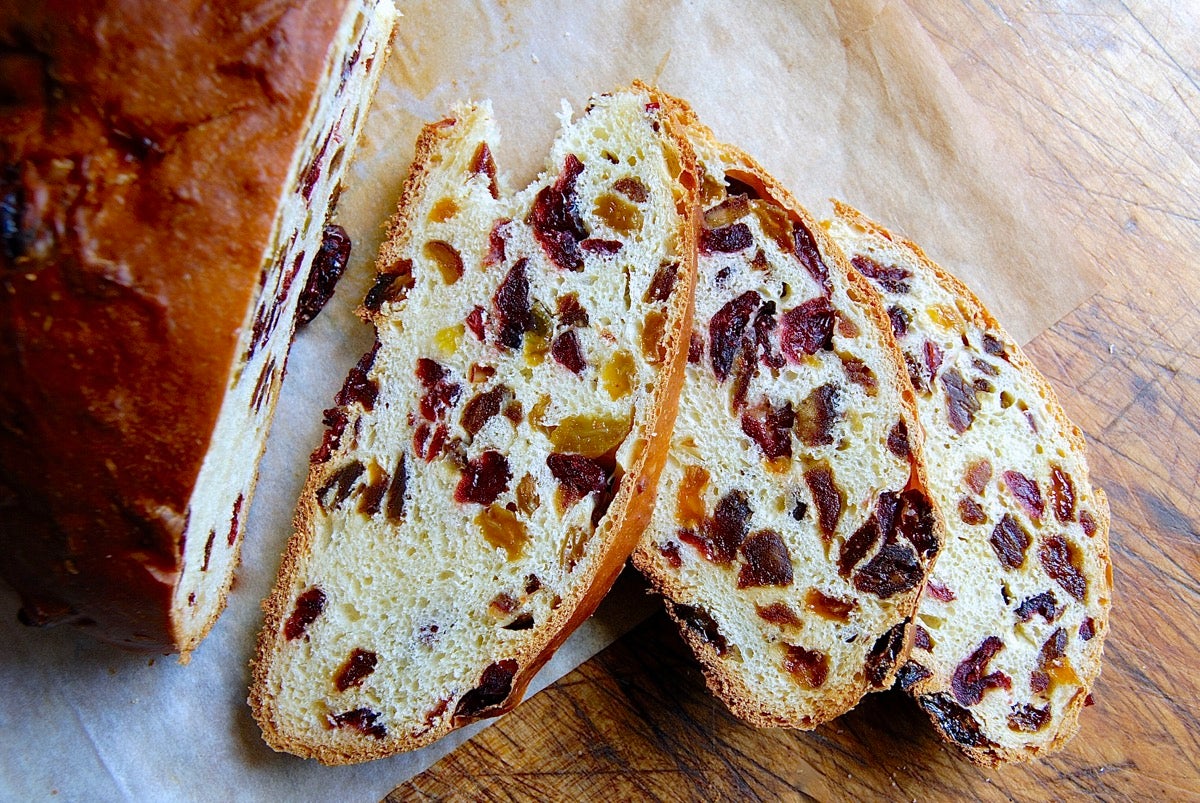
If you’re making yeast bread with a good amount of dried fruit, chopped chocolate, or other sweet ingredients, cutting the amount of sugar in the dough is a no-brainer, taste-wise. Your tongue will focus on the sweet raisins and cherries, not the sugar-free bread surrounding them.
Pure sugar on the tongue in the form of frosting or filling is perceived as much sweeter than any sugar in the bread itself. Lower the sugar in cinnamon rolls and sticky buns by first omitting some of the sugar from the dough.
Then, look at the filling and frosting. Again, look at your specific recipe: is there so much frosting that it's mounded atop the rolls? So much brown sugar filling that it's spilling out? Maybe a bit less of each will still provide the decadent rolls you want.
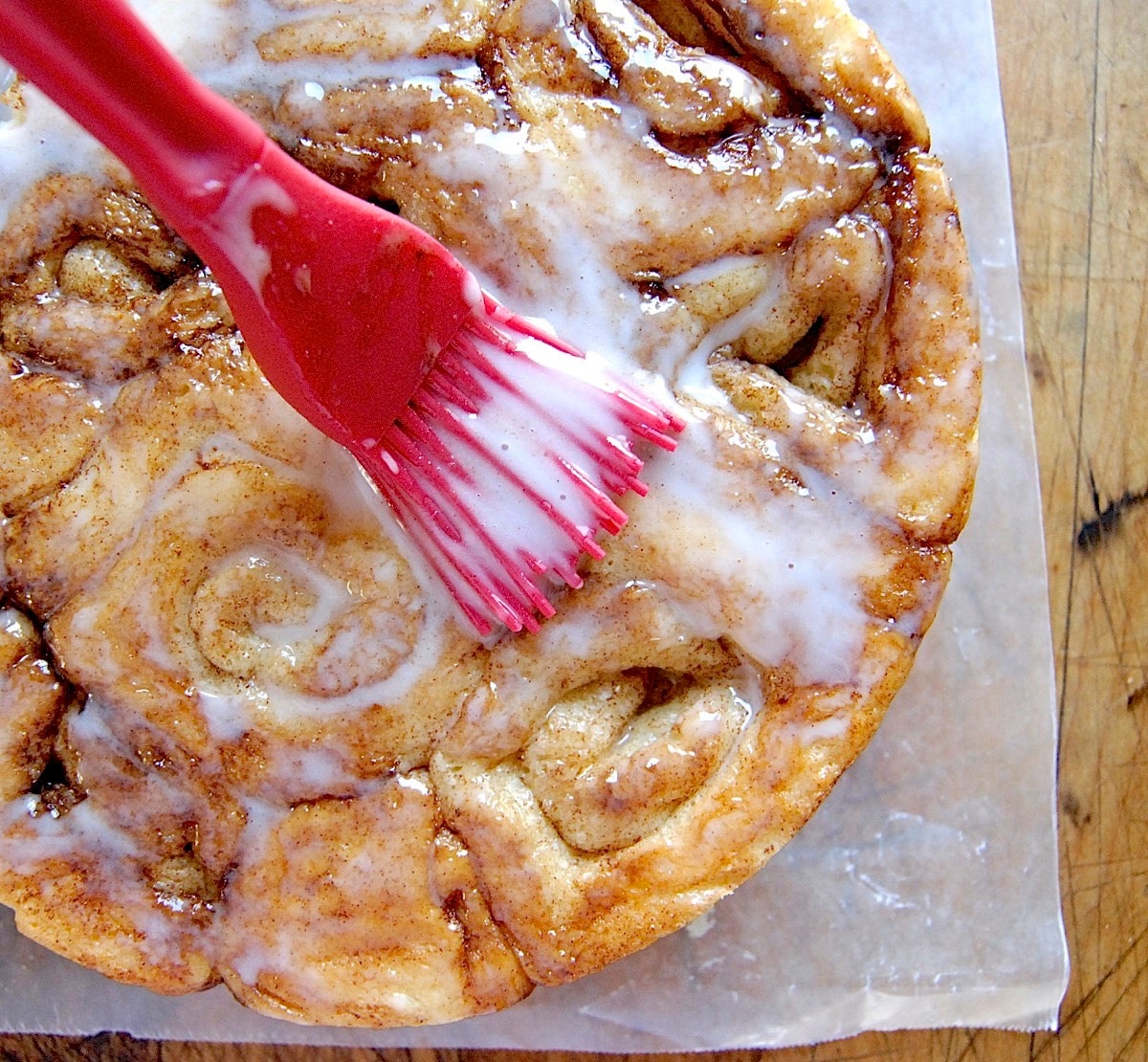
Here's a tip: if you reduce the amount of frosting, stir in more liquid than you'd usually use. The more fluid your frosting, the easier it is to spread, the less you’ll use. Ditto the filling: if you use just plain brown sugar and cinnamon, add a bit of water to mix them into a slurry and paint it onto the dough before rolling and cutting.
Remember, your yeast bread dough will rise more quickly anyway, so you may not need special yeast to help high-sugar breads rise.
These tips on reducing sugar in yeast bread apply equally well to those of you baking without gluten.
Do you have favorite tips for cutting back on the sugar in your yeast bread recipes? Please share in comments, below.
Want more information on reducing the sugar in your baking? Read these posts:
How to reduce sugar in muffins
How to reduce sugar in cookies and bars
How to reduce sugar in cake
How to reduce sugar in pie